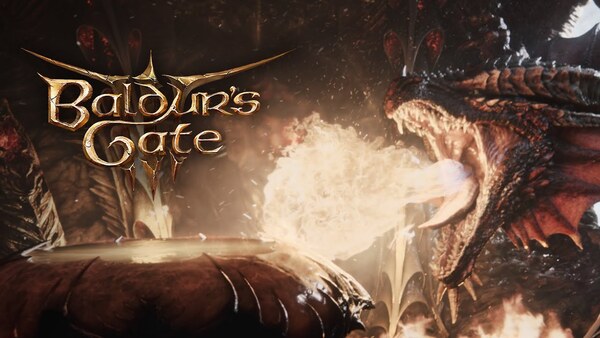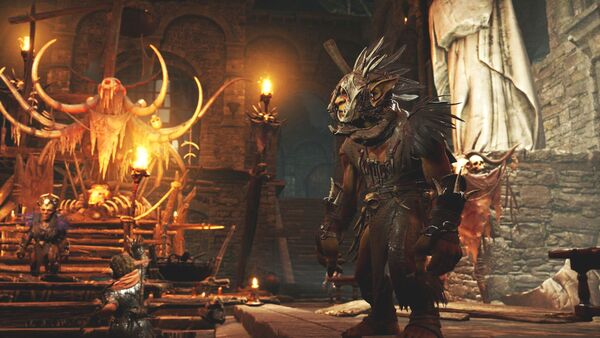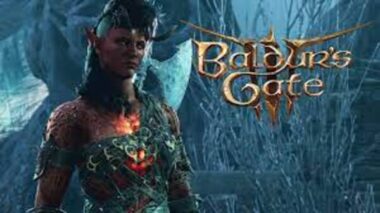Introduction
Baldur’s Gate 3 is a sprawling role-playing game that combines rich storytelling, deep tactical combat, and complex character interactions. Based on the Dungeons & Dragons 5th Edition ruleset, this game offers a myriad of choices, from character creation to moral dilemmas, combat strategies, and environmental interactions. Whether you’re new to RPGs or a seasoned D&D player, mastering Baldur’s Gate 3 requires an understanding of its mechanics, the world, and the intricate relationships between your party members. In this guide, we’ll break down key tips and strategies to help you navigate the challenges of Faerûn.

1. Character Creation: Building Your Hero
The first step in Baldur’s Gate 3 is character creation, which can be overwhelming due to the many customization options available.
Choosing a Race and Class Your choice of race and class will influence your character’s abilities, strengths, and playstyle throughout the game. Each race comes with unique traits, such as Elves’ extra proficiency in certain weapons or Dwarves’ resistance to poison. Classes like Wizards, Fighters, Rogues, and Clerics provide distinct abilities and spell choices that define your role in combat and dialogue.
Ability Scores and Background During character creation, you’ll allocate ability scores that affect your combat prowess and dialogue options. For example:
- Strength helps with physical combat and carrying capacity.
- Dexterity enhances ranged attacks and dodging.
- Intelligence is crucial for spellcasting and puzzle-solving. Choose ability scores that complement your class. Backgrounds also play a role in the story and can offer unique skill proficiencies and bonuses in social interactions.
2. Party Composition: Building a Balanced Team
A strong party composition is key to success in Baldur’s Gate 3. While your character plays a central role, your companions will complement your weaknesses and fill in the gaps in your abilities.
Varied Roles in Combat Balance your party by ensuring you have different roles covered:
- Tank: Someone with high armor and hit points, like a Fighter or Paladin, to absorb damage.
- Damage Dealer: A Rogue or Ranger to deal consistent damage with physical or ranged attacks.
- Spellcaster: A Wizard or Sorcerer to cast powerful offensive and utility spells.
- Healer: A Cleric or Druid to heal and support the party with buffs and debuffs.
Companion Synergy Each companion brings their own story, abilities, and personality to the group. Learning how to utilize their abilities effectively in battle and forming relationships with them will enhance your experience. For example, Shadowheart, a Cleric, excels at healing and supporting the team, while Gale, a Wizard, provides immense magical firepower.
3. Exploring the World: Environment and Interactions
Baldur’s Gate 3 rewards exploration, and understanding the world around you can lead to hidden treasures, story events, and advantageous combat positions.
Investigating Every Corner The game’s world is filled with secrets. Search every room, cave, and nook for hidden items or clues. Many puzzles and treasure chests can be uncovered by examining your surroundings, or by using spells like Detect Magic or unlocking doors with Thieves’ Tools. Take your time and be thorough.
Dialogue Choices and Consequences Every conversation in Baldur’s Gate 3 offers branching choices, and many are based on your character’s background, race, or class. Some interactions can change your relationships with companions, alter the course of quests, or affect your party’s moral standing. Consider the potential consequences before making major decisions, as even seemingly minor choices can have long-lasting effects.
4. Turn-Based Combat: Mastering Strategy
Combat in Baldur’s Gate 3 is tactical and turn-based, requiring careful planning and coordination between your party members.
Action Economy and Positioning In battle, each character has a set number of actions they can take each turn, including an Action, Bonus Action, and Movement. Maximizing this action economy is essential:
- Actions: Attack, cast a spell, or take defensive actions like the Dodge action.
- Bonus Actions: Some abilities or spells allow you to perform extra tasks, like hiding or healing.
- Movement: Positioning your characters for tactical advantage is key. Use high ground for ranged attacks, and position melee fighters to block enemies from reaching your casters.
Environmental Interactions The environment is a vital part of combat in Baldur’s Gate 3. Use explosive barrels, push enemies off cliffs, or set fire to oil spills for extra damage. Being aware of your surroundings and using them to your advantage can turn the tide of battle.
5. Spellcasting and Abilities: Using Powers Wisely
Spells and special abilities in Baldur’s Gate 3 can have game-changing effects in combat and exploration.
Choosing the Right Spells Your choice of spells can significantly impact your effectiveness in both battle and problem-solving. Area of effect (AoE) spells like Fireball can damage multiple enemies at once, while crowd control spells like Hold Person can incapacitate enemies, making them easier to defeat. Always ensure you have a mix of offensive, defensive, and utility spells prepared for different situations.
Resource Management Spell slots are a limited resource in Baldur’s Gate 3. Use them wisely, especially during extended adventuring periods. Resting at camp restores your resources but also advances time, which can have narrative consequences. Always ensure you’re using your most powerful spells only when necessary.

6. Skill Checks and Dialogue: Navigating Social Interactions
Baldur’s Gate 3 uses dice rolls to determine the outcome of many skill checks during conversations and interactions.
Making the Most of Skill Proficiencies Your character’s skills, such as Persuasion, Intimidation, or Sleight of Hand, will play a huge role in conversations and stealthy interactions. If your character lacks proficiency in certain skills, use companions with better stats to handle those situations. For instance, let a charismatic companion take the lead during diplomatic encounters.
Handling Failures Not every skill check will succeed, but failure can still lead to interesting outcomes. If a persuasion attempt fails, it might open up a new quest or create a tense standoff. Be prepared to adapt to unexpected outcomes and embrace the organic storytelling that unfolds.
7. Resting and Camp Management: Keeping Your Party Strong
Resting in Baldur’s Gate 3 is crucial for recovering hit points, spell slots, and managing your party’s needs.
Short Rest vs. Long Rest
- Short Rests allow you to recover some health and limited abilities without advancing time.
- Long Rests fully restore health and resources but move the story forward, which can affect certain quests and events.
Camp Interactions Your camp is more than just a resting spot; it’s a place where your party members can bond, revealing personal stories and offering insights into their pasts. Take time to talk to your companions at camp to build relationships and unlock new dialogue options.
8. Crafting and Inventory Management: Staying Prepared
Baldur’s Gate 3 features a robust inventory and crafting system, allowing you to create useful items or potions.
Managing Inventory Weight Each character can only carry so much, and overburdening them will slow down their movement and effectiveness. Share items between characters, and offload unnecessary loot at vendors regularly. Prioritize keeping healing potions, scrolls, and important equipment.
Crafting Useful Items Ingredients you collect throughout the world can be used to craft potions, poisons, and other useful consumables. Always keep a variety of items at your disposal, such as health potions, antidotes, and scrolls for emergency situations.
9. Dealing with Death: Reviving and Resurrection
Inevitably, one of your party members will fall in battle. Knowing how to deal with death is an important part of survival in Baldur’s Gate 3.
Reviving in Combat The Revivify spell or Scroll of Revivify can bring a character back to life during battle. Always have a few revival scrolls on hand for emergencies. Additionally, characters who are down but not dead can be stabilized using healing spells or items.
Post-Battle Resurrection After combat, you can return to camp and use resources to fully revive any fallen characters. This can sometimes be a safer option than risking valuable scrolls in the heat of battle.
10. Constantly Evolving World: Embracing Change
Baldur’s Gate 3’s story is ever-changing based on your choices, and the world reacts dynamically to your actions.
Reactivity of the World The choices you make, whether in combat, dialogue, or exploration, can alter the world around you. Characters might react differently to you based on your past decisions, and the story can take vastly different paths depending on your alignment, moral decisions, and loyalty to your companions.
Embracing Multiple Playthroughs Given the game’s depth and the number of different outcomes based on your choices, Baldur’s Gate 3 is designed for multiple playthroughs. Try different character builds, make alternative choices, and see how the world shifts each time you play.

Conclusion
Mastering Baldur’s Gate 3 requires a combination of strategic combat, thoughtful character building, and careful exploration. Whether you’re focused on battle tactics, party management, or storytelling, the key to success is adaptability. Take your time to explore every inch of the game’s world, experiment with different abilities and companions, and embrace the rich narrative. With the right approach, you’ll uncover the many secrets of Faerûn and become a legend in your own right.


